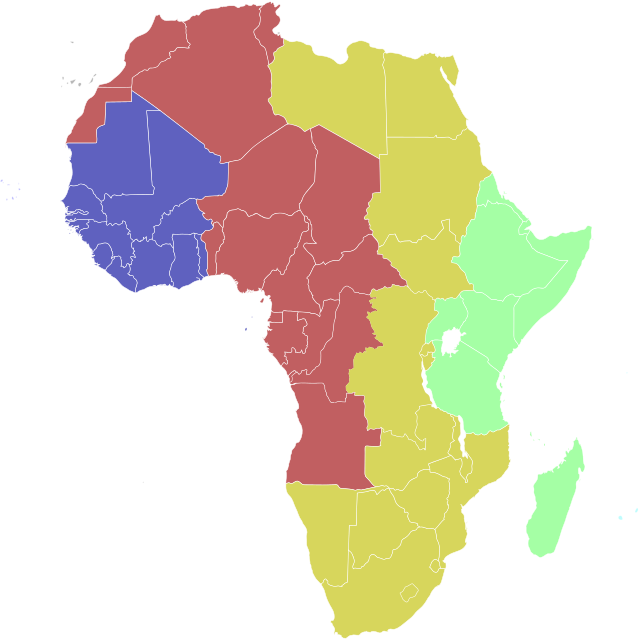Loading AI tools
Time zone From Wikipedia, the free encyclopedia
South African Standard Time (SAST) is the time zone used by all of South Africa as well as Eswatini and Lesotho. The zone is two hours ahead of UTC (UTC+02:00) and is the same as Central Africa Time. Daylight saving time is not observed in either time zone. Solar noon in this time zone occurs at 30° E in SAST, effectively making Pietermaritzburg at the correct solar noon point, with Johannesburg and Pretoria slightly west at 28° E and Durban slightly east at 31° E. Thus, most of South Africa's population experience true solar noon at approximately 12:00 daily.

| Light Blue | Cape Verde Time[a] (UTC−1) |
| Blue | Greenwich Mean Time (UTC) |
| Red | (UTC+1) |
| Ochre | (UTC+2) |
| Green | East Africa Time (UTC+3) |
| Turquoise | (UTC+4) |
The western Northern Cape and Western Cape differ, however. Everywhere on land west of 22°30′ E effectively experiences year-round daylight saving time because of its location in true UTC+01:00 but still being in South African Standard Time. Sunrise and sunset are thus relatively late in Cape Town, compared to the rest of the country.
To illustrate, daylight hours for South Africa's western and easternmost major cities:
The South African National Time Standard, or 'SA Time' Master Clock, is maintained at the Time and Frequency Laboratory of the National Metrology Institute of South Africa (NMISA) at Pretoria and is distributed publicly by an NTP Internet Time service.[1][2]
Before 8 February 1892, there was no uniformity of time in South Africa and local mean time was in use at the various towns. In 1892, a railway conference was held in Bloemfontein and discussed difficulty of working a railway system, in the absence of a uniform time system. The governments of the Orange Free State, Transvaal and the Cape Colony officially adopted a uniform standard time of UTC+01:30 which was defined as mean time 22.5° east of Greenwich.[3] On 1 March 1903 GMT+02:00 was adopted, which became the current UTC+02:00 when UTC replaced GMT for most purposes.[4][5]
Prior to 1 March 1903, the Colony of Natal was already using a uniform time supplied by the Natal Observatory. The observatory's local mean time was (UTC+01:52).
South Africa observed a daylight saving time of GMT+03:00 (UTC+03:00) between 20 September 1942 to 21 March 1943 and 19 September 1943 to 19 March 1944.[6]
South African Standard Time is defined as "Coordinated Universal Time plus two hours" (UTC+02:00) as defined in South African National Government Gazette No. 40125 of 8 July 2016.[7]
Seamless Wikipedia browsing. On steroids.
Every time you click a link to Wikipedia, Wiktionary or Wikiquote in your browser's search results, it will show the modern Wikiwand interface.
Wikiwand extension is a five stars, simple, with minimum permission required to keep your browsing private, safe and transparent.